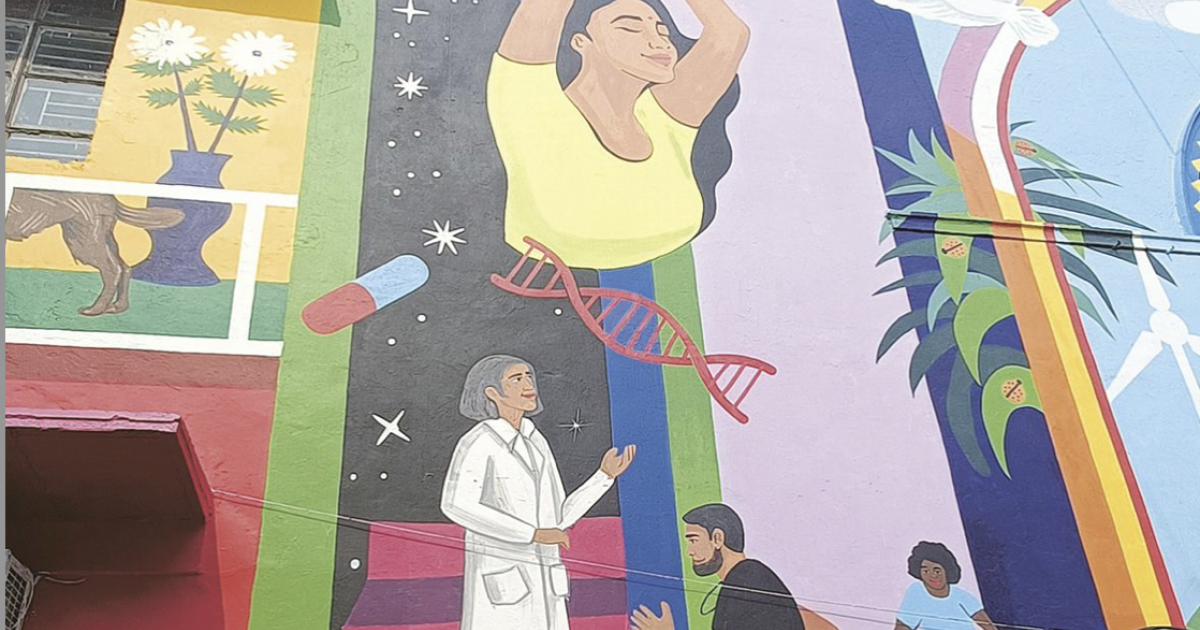
My friend Sunil Malhotra asked if I’d like to go and see the open-air art gallery of the Lodhi neighbourhood on my last day in Delhi. We spent the morning visiting street after street, admiring the fabulous colours and beautiful images painted on the walls of residential buildings.
In 2015, a group of 50 accomplished artists from around the world started transforming the ordinary walls of Delhi into these extraordinary artworks.
This article originally appeared in the Resurgence & Ecologist magazine.
Since then they have been successful in not only bringing art to people but also revitalising the street life of this close-knit community spread across five square miles.
Nirvana
When Sunil first mentioned street art I was curious, but I could not have imagined the breadth and scale of it all. It is more than street art – it is whole neighbourhood art. I saw the images of traditional Indian icons such as sacred cows and lotus flowers.
I saw the decorated faces of classical dancers, vernacular cultures of village women, and a Love Tree in a magnificent red colour. There was eco-art to highlight the plight of endangered animals and to warn people about the impending catastrophe due to global heating. There were political cartoons and spiritual imagery of a way to nirvana.
Many of these images are projecting a meaning and a purpose. Nature, life and love are the enduring themes of art all over the world and this freshly painted and unusual graffiti in a corner of Delhi is no exception.
The only difference is that much of mainstream art is hidden behind closed doors protected by security guards, whereas in these streets and in this community, art is part of life!
Brushes
Art is not simply decoration, or just pretty pictures for entertainment. In this neighbourhood of Delhi, art tells a story, communicates a message and engages people in the contemporary questions of our culture.
Sunil explained that the project to bring such beauty and aesthetics into everyday life is being supported by the local residents, by government agencies, and by the foreign embassies of more than 20 countries.
This is an example of creative collaboration between countries and communities, artists and authorities, businesses and citi-zens and is coordinated by St+art India Foundation. It is a good example of a gift economy. The artists have donated their time and talent, businesses have donated paints and brushes, and many other gifts have come from various sources.
Enrichment
These visionary art activists had a dream – a dream to free art from the confines of museums and art galleries. Art for them is not, and it should not be, just a commercial commodity: art is, and should be, a way of cultural enrichment.
These avant-garde artists believe that art needs (and deserves) to be a part of everyday activities. Museums attract just a few hundred visitors a day who see art as an object of entertainment or as an academic subject or a financial investment or a symbol of status. In contrast the radical street artists in Delhi want to make art accessible to everyone, every day and in every place. Thousands of people walk through these streets and look at the images and no one is required to buy a ticket!
- SEO Powered Content & PR Distribution. Get Amplified Today.
- PlatoData.Network Vertical Generative Ai. Empower Yourself. Access Here.
- PlatoAiStream. Web3 Intelligence. Knowledge Amplified. Access Here.
- PlatoESG. Carbon, CleanTech, Energy, Environment, Solar, Waste Management. Access Here.
- PlatoHealth. Biotech and Clinical Trials Intelligence. Access Here.
- Source: https://theecologist.org/2024/jun/04/art-way-being
